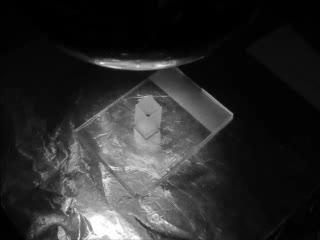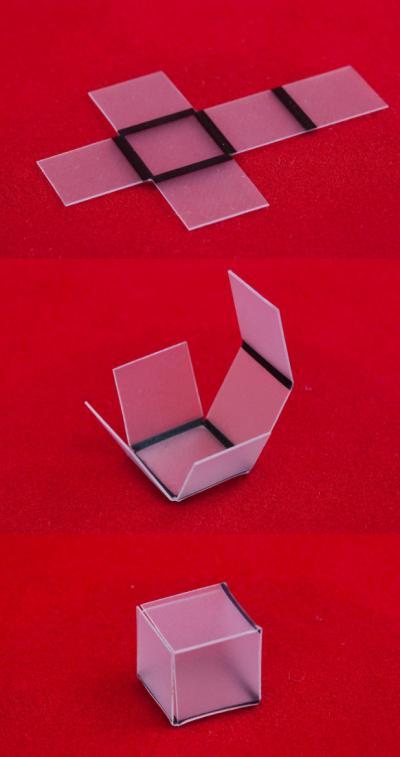By varying the width of the black lines, or hinges, researchers are able to change how far each hinge folds. For example, they can create a hinge that folds 90 degrees for a cube, or a hinge that folds 120 degrees for a pyramid. The wider the hinge, the further it folds. Wider hinges also fold faster, because there is more surface area to absorb energy.
"You can also pattern the lines on either side of the material," Dickey says, "which causes the hinges to fold in different directions. This allows you to create more complex structures."
The researchers developed a computer-based model to explain how the process works. There were two key findings. First, the surface temperature of the hinge must exceed the glass transition temperature of the material, which is the point at which the material begins to soften. Second, the heat has to be localized to the hinge in order to have fast and effective folding. If all of the material is heated to the glass transition temperature, no folding will occur.
"This finding stems from work we were doing on shape memory polymers, in part to satisfy our own curiosity. As it turns out, it works incredibly well," Dickey says.

Researchers from North Carolina State University have developed a simple way to convert two-dimensional patterns into three-dimensional (3-D) objects using only light.
(Photo Credit: Ying Liu, North Carolina State University)

The new technique, developed at NC State, can be used to create a variety of objects, such as cubes or pyramids, without ever having to physically touch the material.
(Photo Credit: Michael Dickey, North Carolina State University)
Source: North Carolina State University